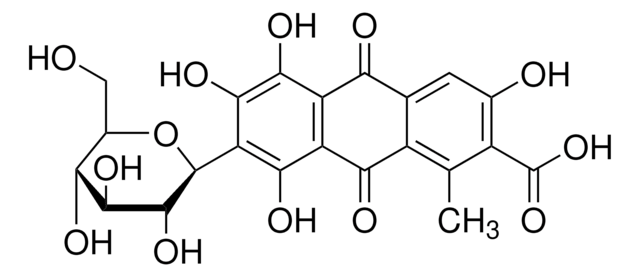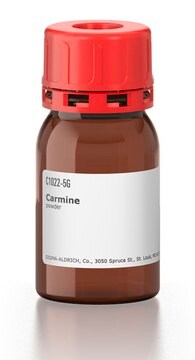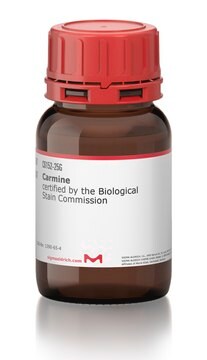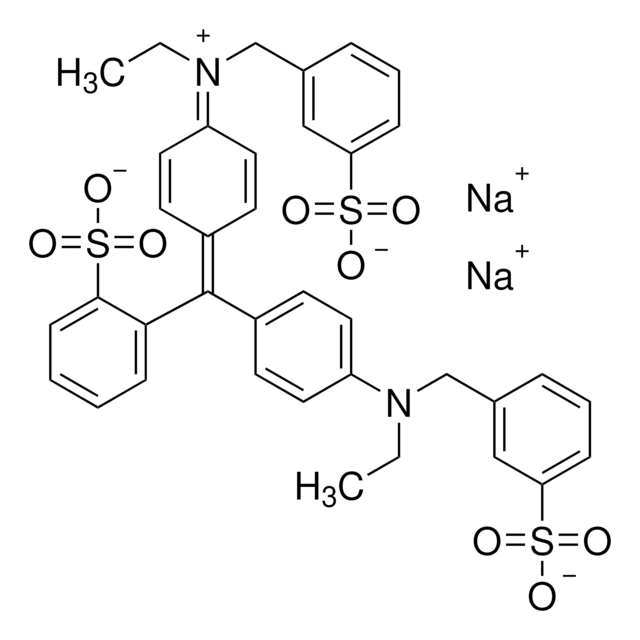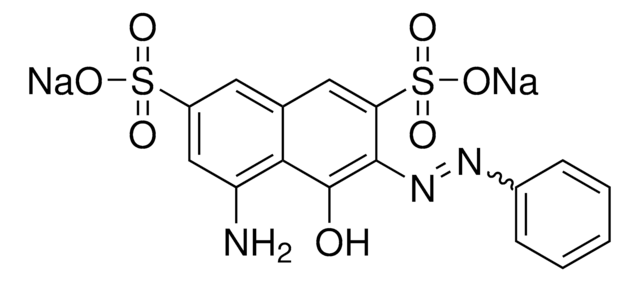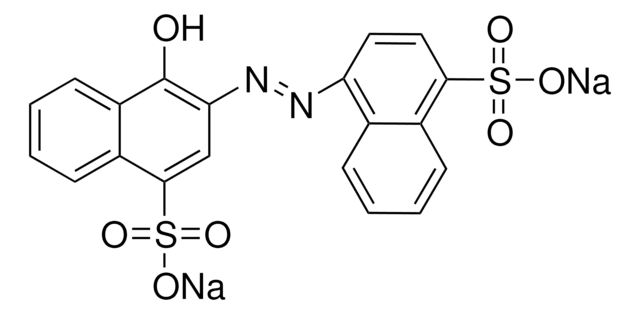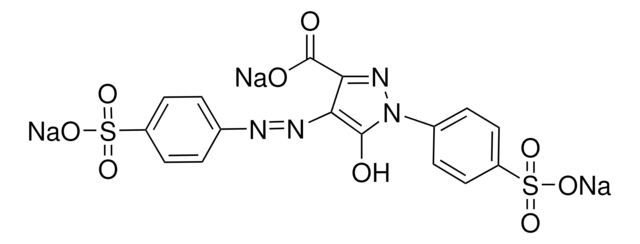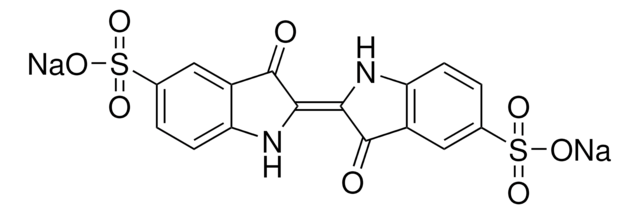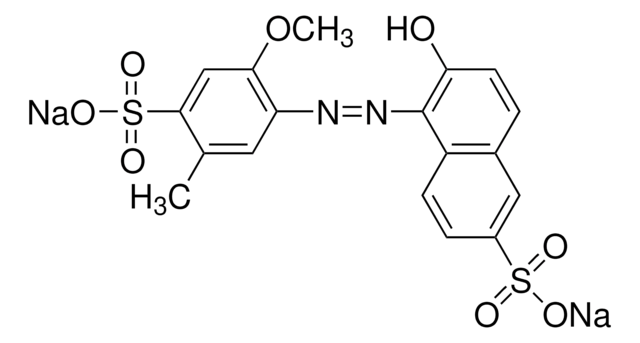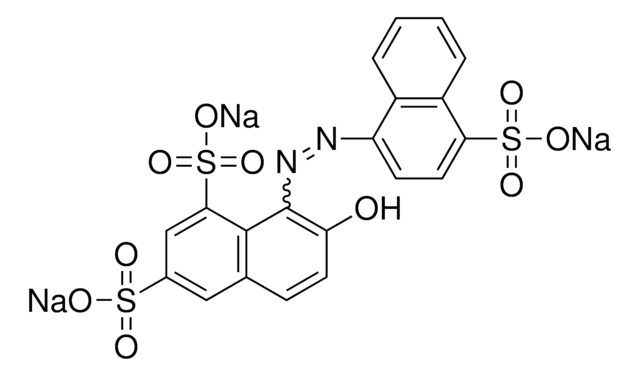11298
Carminic acid
analytical standard
Synonym(s):
Natural Red 4
About This Item
Recommended Products
grade
analytical standard
Quality Level
assay
≥90% (HPLC)
shelf life
limited shelf life, expiry date on the label
technique(s)
HPLC: suitable
gas chromatography (GC): suitable
application(s)
cleaning products
cosmetics
food and beverages
personal care
format
neat
SMILES string
Cc1c(C(O)=O)c(O)cc2C(=O)c3c(O)c(O)c([C@@H]4O[C@H](CO)[C@@H](O)[C@H](O)[C@H]4O)c(O)c3C(=O)c12
InChI
1S/C22H20O13/c1-4-8-5(2-6(24)9(4)22(33)34)13(25)10-11(15(8)27)16(28)12(18(30)17(10)29)21-20(32)19(31)14(26)7(3-23)35-21/h2,7,14,19-21,23-24,26,28-32H,3H2,1H3,(H,33,34)/t7-,14-,19+,20-,21+/m1/s1
InChI key
DGQLVPJVXFOQEV-JNVSTXMASA-N
Looking for similar products? Visit Product Comparison Guide
General description
Application
Storage Class
11 - Combustible Solids
wgk_germany
WGK 2
ppe
Eyeshields, Gloves, type N95 (US)
Choose from one of the most recent versions:
Already Own This Product?
Find documentation for the products that you have recently purchased in the Document Library.
Customers Also Viewed
Our team of scientists has experience in all areas of research including Life Science, Material Science, Chemical Synthesis, Chromatography, Analytical and many others.
Contact Technical Service